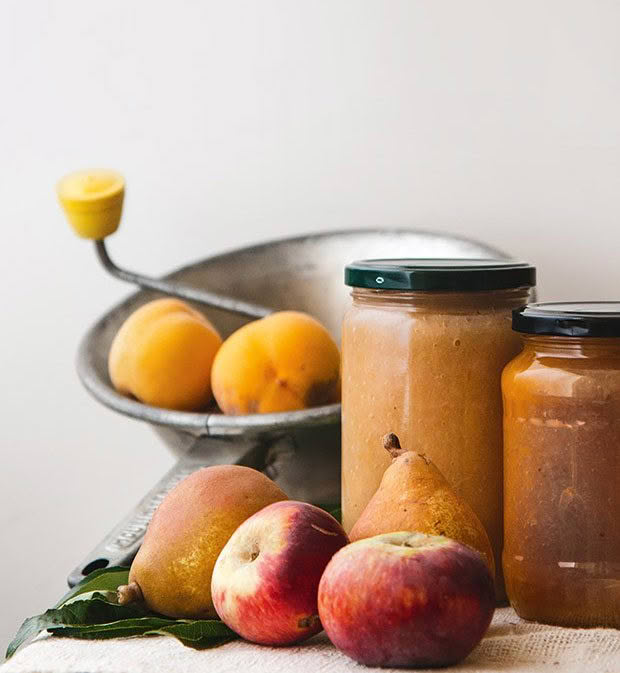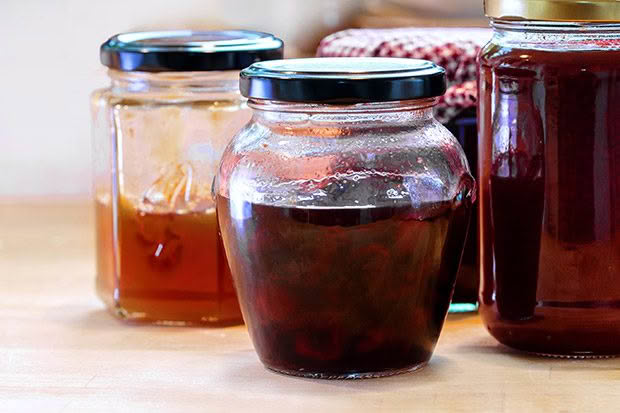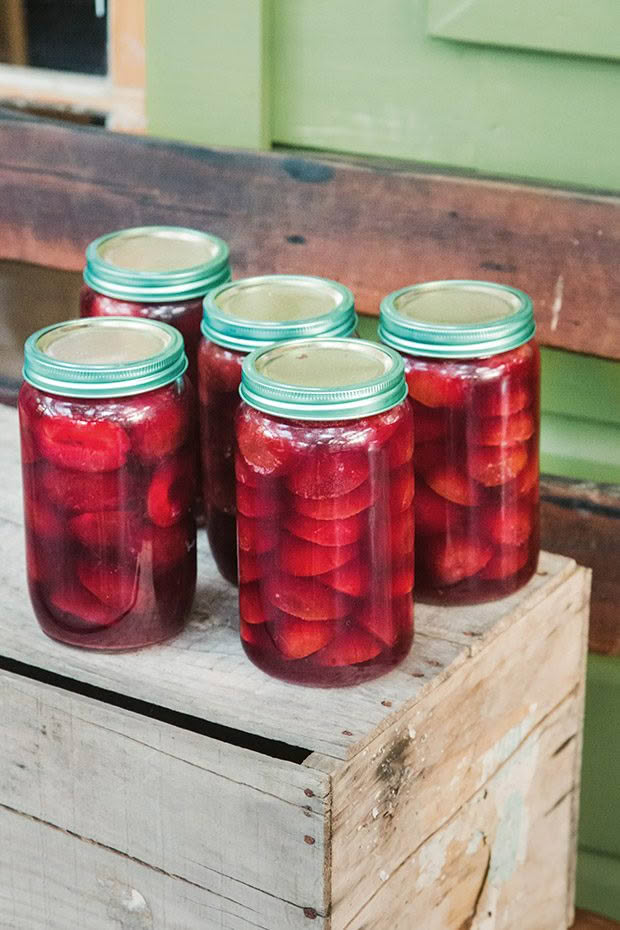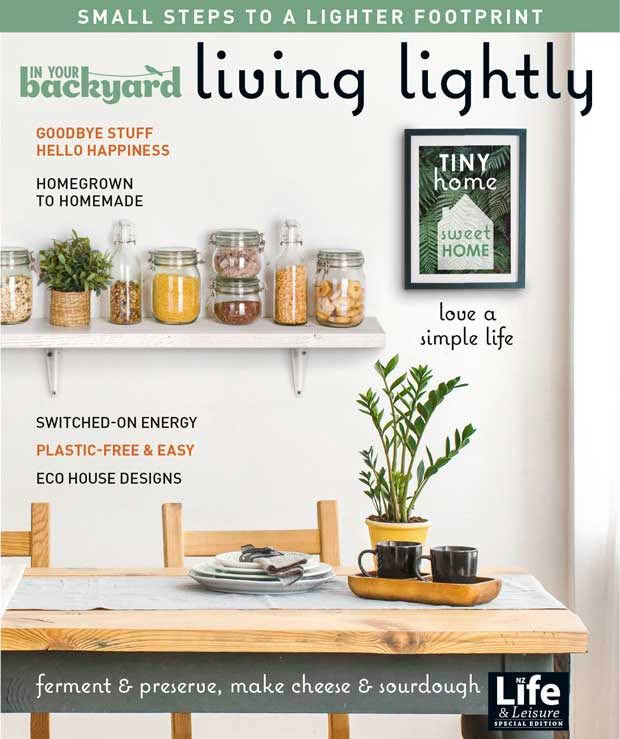Preserves 101: How to sterilize jars and preserve fruit for long-lasting jams, chutneys and sauces

Make summer fruit and veggies last through winter with these simple preserving techniques, including low-sugar options for fruit bottling and jams.
Words: Nicola Galloway
It is possible to preserve with small amounts of sugar, and even no added sugar in some cases. The key is following precise preserving and bottling techniques.
https://www.instagram.com/p/B7J8T8XJdxw/
JARRING QUESTIONS: WHICH JARS TO USE?
Agee and Perfit jars are most often used for preserving and can be used repeatedly, with sealable lids available from most supermarkets.

It is also possible to reuse food jars such as pasta sauce, gherkin, jam and chutney jars. As long as the rubber seal on the inside of the lid is in good condition, it can be re-used safely.
CORRECTLY SEALED JARS & STORAGE
It is essential that lids are correctly sealed before storing. After the jars have been processed using one of the techniques described (see preserving methods below), completely cool and check that the “button” on the lid is down or, if there is no button, that the lid is curving into the jar creating a vacuum seal. If not sealed correctly do not store the jar – eat fresh or freeze contents instead.

Always store sealed jars of preserves in a cool dark place such as a pantry as heat fluctuations can cause the seals to expand and retract, potentially spoiling the contents.
STERILIZING JARS
The “water bath” preserving method explained below doesn’t require pre-sterilizing of jars as they will be heated to boiling point during processing. For the “open pan” method, often used for smaller batches of preserves such as chutney and jam, it is essential jars are sterilized correctly before use.
Oven sterilization. Clean jars in hot soapy water, rinse and arrange on an oven tray. Place in a 120°C oven for 10 minutes until jars are dry. Meanwhile boil the lids for 10 minutes, then drain and air dry on a dish rack. Remove jars one at a time from the oven to fill with piping hot sauce, jam or chutney. Secure the lids and place jars on a wooden bench or board to cool.
Boiling sterilization. Place jars and lids in a large pot, cover with cold water and bring to a boil, then simmer for 10 minutes. Carefully remove with jar tongs, drain and air dry on a rack. Do not use a tea towel to dry as lint can contaminate the jar.
WATER-BATH PRESERVING

Water-bath preserving is the process of immersing jars of produce in a bath of cold water that is then slowly brought to the boil and held at a high heat for some time. Water-bath preserving units can be purchased, or make one using a large pot with a small wire rack or plate in the base to sit the jars on.
Step 1: Fill jars with prepared sauce or pack snugly with fruit and syrup to 1cm from the top of the jar.
Step 2: Screw on lids and place in the water bath with 1cm space between jars for water to circulate.
Step 3: Fill the water bath or pot with cold water to cover the top of the jars by 1cm, or to the shoulder of taller jars.
Step 4: Cover (if possible) and bring to a gentle boil.
Step 5: Once the water just reaches a boil, turn down to low and hold at this heat for 10 minutes.
Step 6: Carefully remove jars using jar tongs and leave to cool on the bench. Once jars are completely cooled check lids are correctly sealed. Store in a cool, dark pantry or cupboard.
OPEN-PAN PRESERVING
This is similar to the overflow method although less messy as the jars aren’t quite filled to the top. Use this technique when making a small batch of chutney or sauce.
Step 1: Reheat jam or chutney if needed.
Step 2: Sterilize jars (see sterilization methods above).
Step 3: Using oven gloves, hold hot jars and fill with piping hot chutney or jam to within 5mm from the top. Use a damp cloth to wipe the jar rim.
Step 4: Screw on sterilized lids and leave to cool completely on the bench. Check that the lids are sealed correctly. Store jars in a cool, dark pantry or cupboard.
Note: These preserving techniques are only recommended for fruit, including tomatoes. They are not suitable for non-acidic vegetables, or fish and meat.
This is an extract from our special edition In Your Backyard: Living Lightly
In Your Backyard: Living Lightly is filled with practical advice on making small steps to a lighter footprint. Order online here.


